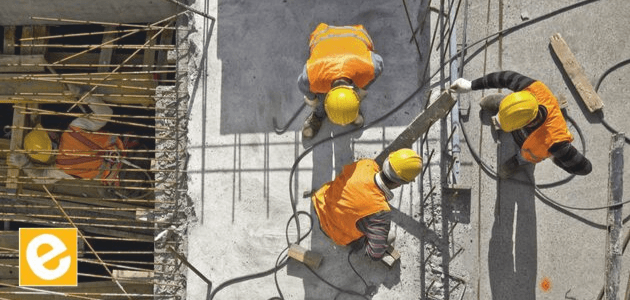

Construction is a high risk and hazard industry that encompasses a broad spectrum of activities, including repair, remodeling, and commercial construction. Construction workers perform dangerous tasks, and they must be aware of electrocution, unguarded machinery, falling off rooftops, getting struck by heavy equipment, etc. Inspections provide certainty that everything in the construction project is working as it should, so we assembled a complete construction site inspection checklist so when the Inspectors come around, your job site passes with flying colors the first time around.
Table of Contents
— OSHA compliance evolves every year and companies must stay current
— Personal protection types and tips
— Surrounding Environments are ever-changing and preventative safety checks will save lives
— Equipment & Machinery – maintenance and safety checklists to keep employees safe and equipment costs low
A construction site inspection checklist is necessary for the preparation of a construction project to help avoid injuries, illnesses, and fatalities. Construction checklists are essential in the planning phase because they list processes and procedures that are mandatory standards. Inspections can put a hold on production if there is a need for reinspection, so Supervisors can use our checklist for efficiency and safety for all projects.
The checklist below is a resource of safety procedures that any company can follow, but always reconfirm your list before starting your next project:
OSHA, (Occupational Safety and Health Administration) is an organization under the United States Department of Labor, and it offers an extensive checklist for construction site safety in order to prevent potential hazards. According to OSHA, in 2017, one in five worker deaths last year occurred on construction developments. This organization identified the four most common reasons for construction fatalities to include electrical hazards, fall hazards, struck-by hazards, and caught-in or -between hazards. In this industry, there are formal inspections of job sites to ensure that companies are following OSHA standards.
OSHA checklists include:
— Crane safety
— Electrical safety
— Elevated surfaces
— Eye and face protection
— Floor and wall opening
— Foot protection
— Forklifts
— Hand protection
— Head protection
— Hazard communication
— Scaffolding
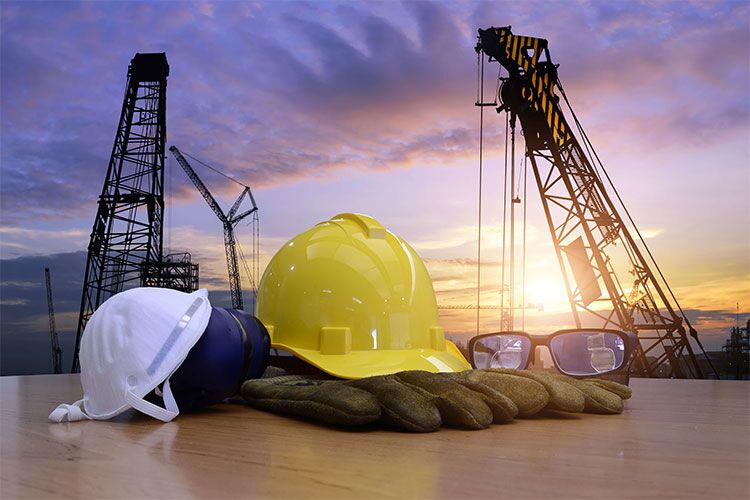
As a Supervisor, it is important to supply and enforce that the team workers are wearing the proper protection on job sites. Appropriate attire and personal protection procedures and equipment are crucial in preventing hazards on the job site.
Eye Protection:
Safety glasses, goggles, or shields should be worn on all construction sites. Eye protection should be worn during all work production times for safety. When working with energized electrical systems, one should wear safety goggles or a face shield to avoid electrical hazards. One should also use eye protection when doing the following activities:
–around flying particles.
Head Protection:
In any instance where there is potential for objects to fall from above, workers must wear hard hats. Additionally, it is imperative to wear one on-site if there is accidental contact with electricity or one hits their head on a fixed object. Team members should routinely check the condition of hard hats and replace them if there is/are:
–dents or cracks
–a heavy blow or electrical shock.
Foot Protection:
Every worker should be wearing safety-toed footwear on any site to prevent crushed toes if something falls on your feet or stubbing toes on heavy objects. Also, proper foot protection should be slip and puncture resistant. Before you go purchase foot protection, make sure you consult with your superior as there many different types of construction footwear that come with pros and cons.
Respiratory Protection:
In any field of construction, workers must wear the appropriate and task-specific P.P.E (Personal Protective Equipment) because on worksites there are a variety of fumes, industrial sprays, dust, and other respiratory hazards.
You will need to replace a new respirator if there are:
–cracks, tears or holes in the filter,
–elasticity in straps, and deterioration of metal nose clips.
Additionally, check for loose-fitting lenses, excessive dirt, or broken/malfunctioning buckles so you can order new equipment or get them cleaned. To learn more about respiratory protection visit the OSHA website.
Scaffolding:
This step in the construction phase is extremely hazardous because scaffolding issues are a common cause of construction accidents. Bureau of Labor Statistics (BLS) stated that scaffolding results in “4,500 injuries and over 60 deaths each year and that almost 30 percent of all workplace deaths from falls involve scaffolding or ladders.”
–fully planked, on stable land
–not moved within 10 feet of power lines
–not altered
–no added material for height
–ideal weather conditions
Examining the scaffolding on the job site is something to check regularly; falls relate to lack and improper installation of guardrails and insufficient training.
Electrical safety:
Electrical workers can be at risk of awful burns, harmful shocks, and fatal electrocutions. OSHA stated that electrocution has the third-highest counted fatalities. To prevent the high numbers in electric shocks, teams should review:
–all electrical equipment and tools are maintained and regularly checked for defects
–Any electrical cords, cables, and wires
–electrical tools are grounded respectively unless they are double insulated.
–Attire and prompt protocols when in contact with electrical energy.
–Additionally, for any electrical equipment that is faulty or broken, they must be replaced promptly.
Elevated Surfaces:
Falls from construction sites are most common, reports the DCD. Almost one-third of all construction compensation claims are from elevated surface mishaps. Companies should double-check the following as it relates to elevated surfaces:
–signs are posted to show elevated surface capacity.
–taller than 48 inches must have standardized guardrails
–have handrails alongside the entry and exit
–Harnesses are attached to secure anchorage
Trained operators should inspect Construction equipment every time they are transported and arrive to the job site. They should know what to look and listen for adequately working equipment. Equipment maintenance is a preventative measure for injuries on job sites and essential to safe operations. Common equipment and machinery are ladders, bulldozers, excavators, etc.
Operators should monitor:
–Fluid or hydraulic leaks
–Loose belts, bolts, screws, fasteners
–Faulty breaks and tire pressure
–Broken or cracked windows/glass
–Seatbelts
–Back up alarms
Additionally, if a piece of equipment is inspected and identified as faulty, the machine should be sidelined for repair or replacement.
Self-Inspection is significant in the construction process because it identifies what needs to be addressed for improvement. When followed, hazards and conflicts during construction builds can be prevented. The number of employee injuries will significantly diminish if companies take the time and dedication to thoroughly self-inspect (and continually monitor) their equipment and job sites to identify potential hazards and problems.
Risk mitigation is the name of the game.
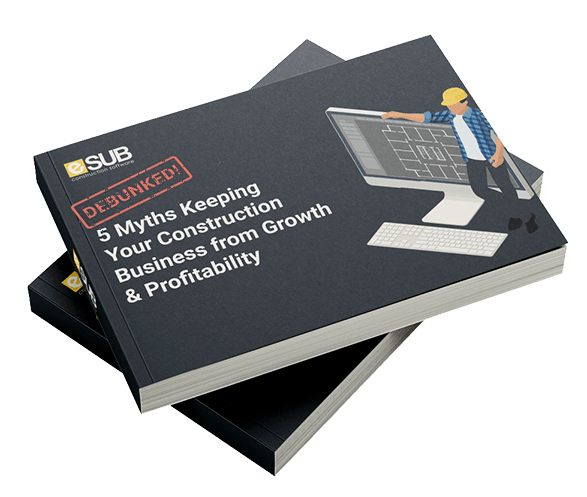

Don't miss out on the latest construction industry news and subcontractor guides.

“When they’re doing daily reports they understand now that if you take a picture of the issues you’re seeing in real time. ”
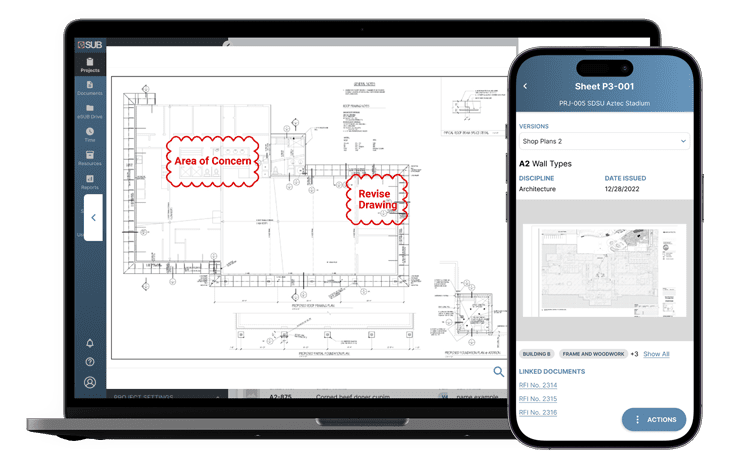

Learn how to take better control of your documents, leading to faster turnarounds and higher field productivity.
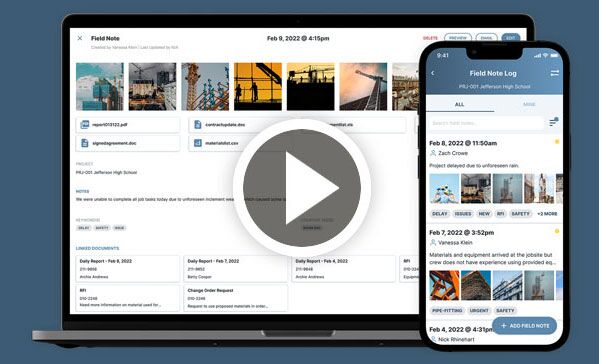
[,"title":"5 Ways Project Management Software Improves On-Site Construction Leadership","excerpt":"Construction project management software helps on-site construction leadership lead projects to successful completion in five ways.","content":"Construction foremen have the extremely complex job of effectively managing project progress while also funneling information back and forth between job-site workers and office-based teams.","author":,"date":"Aug 20, 2024","dateGMT":"2024-08-20 13:00:00","modifiedDate":"2024-08-20 07:02:52","modifiedDateGMT":"2024-08-20 14:02:52","commentCount":"0","commentStatus":"closed","categories":Best Practices, Construction Software","space":"Best Practices Construction Software">,"taxonomies":,"readTime":,"status":"publish">,,"title":"Making the Case for eSUB Software Implementation: 3 Trade Contractor Success Stories","excerpt":"These three trade contractors experienced significant, quantifiable benefits after eSUB software implementation.","content":"Construction project management software isn\u2019t a nice-to-have asset for trade contractors; it\u2019s a must-have tool. It uses real-time data to maximize process efficiencies and worker","author":,"date":"Aug 13, 2024","dateGMT":"2024-08-13 13:00:00","modifiedDate":"2024-08-13 09:19:55","modifiedDateGMT":"2024-08-13 16:19:55","commentCount":"0","commentStatus":"closed","categories":Best Practices, Clients, Construction Software","space":"Best Practices Clients Construction Software">,"taxonomies":,"readTime":,"status":"publish">,,"title":"5 Different Types of Pipe Inspection","excerpt":"","content":"Inspecting pipes and plumbing connections is essential for many home and property owners. It is a standard procedure step for a larger process in building","author":,"date":"Aug 12, 2024","dateGMT":"2024-08-12 19:28:11","modifiedDate":"2024-08-13 14:11:39","modifiedDateGMT":"2024-08-13 21:11:39","commentCount":"0","commentStatus":"closed","categories":<"coma":"Construction Software","space":"Construction Software">,"taxonomies":Best PracticesConstruction Tipspipes">,"readTime":,"status":"publish">]